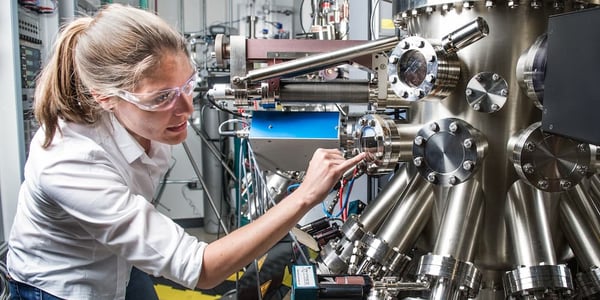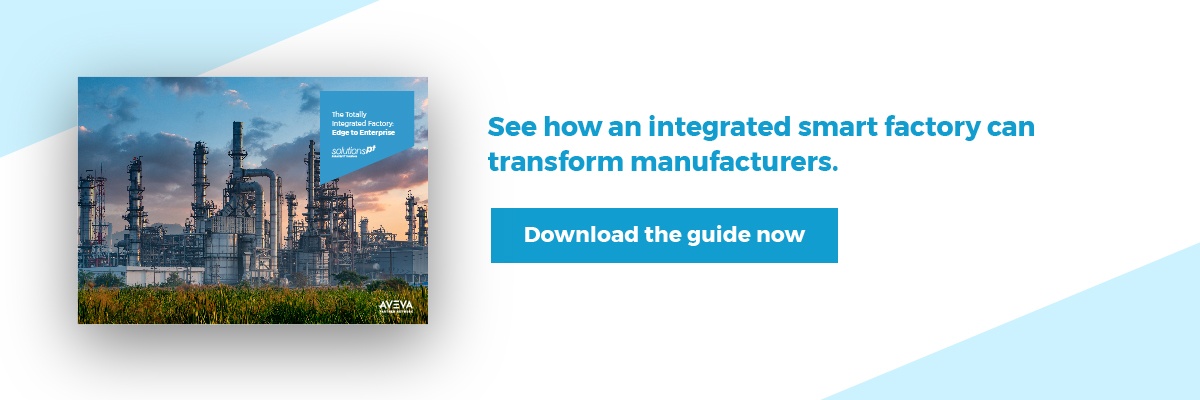SCADA is the acronym for Supervisory Control and Data Acquisition. A SCADA system is a collection of software and hardware that allows a business to control industrial processes, gather real-time data and interact with devices through HMI software.

- What is SCADA?
- A (Very) Brief History of SCADA
- What are the Essential Features of a SCADA system?
- What’s is the Future of SCADA?
What is SCADA?
SCADA systems are made up of monitoring and controlling systems, which can be found at remote sites, like factories or plants. They are critical to maintaining efficiency by collecting and processing real-time data.
The main goal of this system is to monitor and control equipment in the industrial process. The system is used by companies in the public and private sectors.
As of now, SCADA systems can be found in every industry you can think of. From industrial and manufacturing plants and transportation to power distribution and water control, SCADA software systems are everywhere.
A (Very) Brief History of SCADA
Before we can look at where SCADA is heading, let's have a quick history lesson to better understand how it’s developed over the years. That way, we can see how application of SCADA in industry has been shaped over time into the set of systems we’re familiar with.
If you’re all about the future, skip ahead to the next section and we’ll meet you down there.
Before SCADA, there were monitor and control panels with lots of buttons, connected to programmable logic controllers (PLCs). Operators controlled processes by pressing physical buttons.
When Windows came along in the late 80's, a bunch of clever folks created a software program that mimicked those physical interfaces, but on a computer screen. This was the first SCADA system. As Windows Operating Systems proliferated across business enterprises, so did SCADA.
SCADA systems could connect to all related systems (PLCs, DCSs and RTUs) and vendors to improve plant procedures. The rise of modern IT technology saw the traditional SCADA systems fall out of favour. They weren’t integrated with new databases and were seen as outdated as a result.
Fast forward to the present day and SCADA systems have evolved and adapted to meet today’s challenges. Real-time information is easily accessed thanks to greater connectivity and web-based applications.
It’s never been easier for plant operators to connect with experts elsewhere to diagnose and fix an issue - each leveraging vital data to suit their needs.
The wider industry is looking for any way to operate in a fast and lean manner. Productivity, efficiency, and profitability are at the heart of all business goals with the key aim being to remain competitive while also minimising costs. This ideology is going to have a major impact on SCADA and the direction that it’s heading.
What are the Essential Features of a SCADA system?
- Monitor and control of industrial equipment and process though graphically representation controls.
- Trends and Patterns using Real Time and Historical Data.
- Alarm Handling
- Built in Industrial grade durability.
What’s is the Future of SCADA?
Like with any future prediction, everyone is guessing at what’s coming next. We think that making firm predictions in such a fast-changing landscape is a fool's errand. But if we consider the mega-trends and the underlying technological, economic, and human factors driving those trends, we can make certain educated predictions.
For instance, all the top results agree SCADA software will continue to be a mainstay in industrial automation applications. The SCADA system story that’s around 70 years in the making shows no sign of ending anytime soon.
This is because today’s SCADA providers have recognised the need for evolution. Instead of standing still, they’ve considered how their technologies can be utilised to meet customer needs quickly, accurately but without raising costs.
1. Millions of connected Devices
IIoT and the rise of connected devices have already caused a shift to take place, but the sheer volume of data that will soon need to be managed is something that SCADA systems have to handle. Forget hundreds or thousands - it’ll soon be thousands or even millions of devices that are part of networks.
This means SCADA systems will scale to communicate and process data from all these devices. Traditional poll based communication protocols will become obsolete and replaced by lightweight publish/subscribe protocols like MQTT.
2. Edge and Cloud will become a blur
Devices and software services will all need updates and configurations which we expect to see rolled out by the cloud seamlessly. The entire process will be frictionless and, if you’re able to input what’s critical, the software will automatically make decisions if a software service needs to be run on the edge, in the fog or in the cloud.
Although the whole thing will be cloud-managed (rather than operated through local development tools), blurred lines will mean it’s difficult to know what’s on the cloud and what isn’t. But we don’t expect that to matter. All that’s important is functionality and capability.
3. Integration using the Internet of Everything will be standard and trivial
Meanwhile, today’s integrations are expensive because of legacy messaging protocols or file transfers. In the future, we expect them to not only be cheap but also standard across the board. There’ll be no need to translate the information because the system will automatically know what it’s connected to, and all publishers will adhere to standard schemas.
4. Adaptive, self-service UX
We’re also heading towards a change in UX. With rising populations and the growing demand that follows, we need to be as efficient as possible. To avoid disaster and meet demand, we need systems that require less manual work and more decisions made by software. The faster and more intelligent the machines, the better throughput we can achieve.
This doesn’t mean a reduction in the human workforce, even though it can sound a little Skynet. Instead, we’ll see a changing skill set for the next generation of workers who’ll be carrying out different jobs to us today.
Bring IT and OT Together to Boost Productivity and Efficiency
It’s difficult to eradicate a silo mentality that’s developed over time. IT and OT are so used to working separately that bringing them together can cause challenges. Overcoming these obstacles is a topic that we tackle in our guide, ‘The Convergence of IT and OT: A Roadmap for an Aligned Workforce’.
It also features why it’s so important for the two to align, the benefits that your business can reap once they’ve converged and a few best practices to get you started. Get your free copy of the guide now by clicking on the link below.

![[FREE GUIDE] EMBRACING NEW TECHNOLOGY TO TRANSFORM YOUR FACTORY](https://no-cache.hubspot.com/cta/default/4487147/9d21f2d1-3cef-4512-b927-eb448cf098a0.png)

